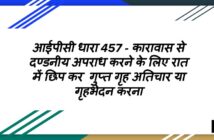Adulteration of food is a major concern. If the quality of the product is compromised it affects the health of the people at large. The food industry such as manufacturing, processing, packaging, wholesale, and distribution of products should make sure that the food products are not handled negligently. The number of adulterated foods has also increased in the market. Hence, the Government has introduced various laws to prevent the issue.
Let us understand the Prevention of Food Adulteration Act, of 1954 in detail. In this article, we will discuss what is food adulteration, what are its harmful effect, what are the salient features of the Act, when is a food said to be adulterated, the penalty under the Act, the responsibility of the Central Government, and the Authorities under the Act.
What is Food Adulteration?
Adding contaminants into food items or beverages to increase the price and quantity of the product is called adulteration of food. Food adulteration deteriorates the quality of the food and causes serious health issues or is injurious to both humans and animals.
What is the harmful effect of food adulteration?
Adulterated food causes serious damage to the human body such as organ inflammation, stomach disorders, and heart, kidney, and liver disorders.
To deal with food adulteration, the state government introduced its laws for their state and provinces. However, these laws had no uniformity which created a barrier to the transportation and promotion of food. Therefore, the Government of India created a Food Adulteration Committee in 1943, which analyzed food adulteration and advised the Central legislation about it. Henceforth, the Prevention of Food Adulteration Act came into existence in 1954.
What is the objective of the Act?
The Prevention of Food Adulteration Act, 1954 (the “Act”) applies to the entire country. The Act aims at preventing the adulteration of food and beverages for human consumption, except for drugs and water.
Salient Features of the Act
- The Act has defined adulteration and listed food items with types of adulteration or contamination.
The Act deals with the fraud created by the dealers to sell cheaper and adulterated foods to the consumer. - It regulates the use of flavours, pesticides, chemicals, and other additives or preservatives in food preparation.
- It controls the over-dumping of substandard articles or food items.
- The Act also contains provisions for the enrichment of bread, flour, or other cereals with minerals or vitamins, the iodization of salt, the addition of vitamin “C” in some foods, and the vitalisation of vanaspati oil.
- The Act empowers the Central Government to create a Committee for examining the food items and make recommendations regarding the implementation of the Act.
- The Act also authorizes the Central Government to define the standards of food quality, control the production, packaging, labelling, licensing, distribution, and sale of food, and control food additives or preservatives.
- The Central and the State Government is empowered to create Central Food Laboratories for the examination of food adulteration at a different state, region, or district level.
- The State Government is also authorized to appoint a food inspector to inspect, collect and submit the food items to the laboratory for examination of adulteration of food.
When is food said to be adulterated?
A food is said to be adulterated when –
- The item sold by the vendor does not meet the standard of the article or customers;
- It contains elements that deteriorate the quality of the article;
- The article has been stored or manufactured in unhygienic conditions;
- The item contains any substances that are unfit for human consumption such as decomposed or rotten animal or plant substances, putrid (foul smell), insect-infected, etc.
- The article contains any substance derived from a diseased animal;
- The article contains any injurious or poisonous substances;
- The article’s container or packaging is made up of injurious substances;
- If the coloring agent which is not prescribed is added to the article;
- If the article contains any preservative or the quantity of preservative is more than the prescribed limit;
- The purity or quality or constituents of the article does not meet the standards set by the committee whether it is injurious or non-injurious to the health.
However, if the purity, quality, or constituents of the article is affected due to natural causes which are beyond the control of the human agency, then, such an article will not be considered to be adulterated.
Examples of Adulterants added to the articles are as follows –
Article/ Food Items |
Adulteration/Contamination |
| Arhar dal | Metanil yellow |
| Baking Powder | Citric Acid |
| Coffee and tea | Chicory, husk, used tea dust, sand and grit, coat tar dyes |
| Groundnut | Aflatoxin can cause cirrhosis of the liver. |
| Milk | Water, abstraction of fat |
| Mustard seed | Argemone seeds cause epidemic dropsy. |
| Non-alcoholic beverages | Saccharin, copper, lead and arsenic, dirt and filth |
| Oils | Mineral oil, argemone oil |
| Spices | Lead or lead chromate in Haldi, sawdust, and sand. Excessive stalky and woody matter in shah jeera. |
| Starchy foods | Arrowroot powder, sand and dust |
| Vanaspati | Excessive hydrogenation, animal fat sesame oil deficiency, foreign flavour. |
Penalty for food adulteration
The Act has levied penalties on the vendor for violation of any of the provisions of the Act. These are levied depending on the situation. An offence committed under the Act is a cognizable and non-bailable offence that can be tried by the Metropolitan Magistrate or Judicial Magistrate of the First class.
If any person imports into India either by himself or through someone, or manufactures for sale, sells, stores or distributes any adulterated food articles which is injurious to the heath then such person has committed an offence under the Act and will be liable for imprisoned for a period of 6 months which may extend to 1 year or with a fine of Rs 2000. This punishment is for first-time offences.
If the person commits the offence for the second time or subsequently then, the vendor’s license will be cancelled and he/she will be liable for imprisonment of up to 6 years.
The vendor will be punished under Section 320 of the Indian Penal Code if the adulterated food causes death, grievous hurt, or injury to the body. The punishment can be 3 years of imprisonment which may extend to life term imprisonment and with a fine of up to Rs. 5000.
Responsibility of the Central Government
The Act has stated the responsibility of the Central Government, these include –
- to establish a Central Committee for Food Standards and food laboratories to test and analyze all kinds of food items or articles;
- to review the provisions of the Act along with the Central Committee;
- organize training programmes for different functionaries under the Act;
- approving state rules relating to the Act;
- specify the article/classes of foods for import that require a license for importing, prescribe conditions and forms for such license, the authorities who issue the license, specify the fees, and the security deposit for performing the license conditions, and the circumstance under which a license can be cancelled and deposit be forfeited.
- check the rules are implemented throughout the states and union territories by collecting periodic reports and frequent spot visits.
- appointing officials as analysts by conducting examinations;
- approving infant food labels;
- check the quality of imported food items;
- making customers aware of food adulteration;
- check the quality and quantity of food laboratories;
- to cooperate and collaborate with the National and International Food Quality Control Organisations such as the Directorate of Marketing and Inspection (operating Agmark Scheme), Codes Alimentarius Commission/World Trade Organisation, Ministry of Food Processing Industries (implementing Fruits Products Order-FPO)
Authorities under the Act/Food inspectors
The Prevention of Food Adulteration is a central Act that is implemented by the respective State Governments and the respective local bodies. The Central and State Government has empowered certain authorities to ensure that the Act is implemented. These authorities are –
Central Committee for Food Standards –
Section 3 of the Act deals with the Central Committee for Food Standards. It is formed by the Central Government to advise the Government relating to the implementation of the Act. The Committee is responsible for making by-laws for regulating its procedure and transaction after the approval of the Central Government.
Central Food Laboratory –
Section 4 of the Act deals with the Central Food Laboratory. Central Food Laboratory is formed by the Central Government to perform the functions assigned under the Act. The Central Government may by notifying in the Official Gazette also assign any institute or laboratory as Central Food Laboratory to carry out the given functions. All rules regarding the procedure for submission of food samples to the laboratories for examination, report forms, payment of fees for such reports, and any other rules as may be necessary for the efficient working of the laboratory.
Food (Health) Authority –
Section 2 of the Act deals with the Food (Health) Authority. The Central or State Government may by notification in the Official Gazette appoint any officer as a Food (Health) Authority. A Food (Health) Authority is a Director of Medical and Health Services who is empowered to look after the health administration of the State. The officer will be designated to a local area for exercising the powers and performing the duties as set forth under the Act.
Local (Health) Authority –
Section 2 of the Act deals with Local (Health) Authority. The Central or the State Government may appoint an officer as Local (Health) Authority by notification in the Official Gazette. Such an officer will be in charge of discharging the duties and exercising the powers of Health administration as stated in the Act for the specified local areas.
Food Inspector –
Section 9 of the Act deals with the appointment, powers, duties, and obligations of a Food Inspector. The Central or State Government appoints a person as a food inspector for their respective local area, having minimum qualifications as may be prescribed in the Act. However, any person having any interest in the manufacture, sale, or import of any food articles he/she is investigating, then such person cannot be appointed as a food inspector. The Food Inspector is a public servant as per Section 21 of the IPC and is subordinate to the Central or State Government. The Food Inspector is empowered to collect samples of food articles and send them to the laboratory for analysis. The Food Inspector is also authorized to stop the sale of any food articles if it does not meet the standards as prescribed under the Act.
Conclusion
Food is one of the basic requirements of an individual therefore, it is the right of every individual to consume fresh and unadulterated food. The Prevention of Food Adulteration Act, of 1954 was introduced to protect the health of the public by keeping a check on food adulteration. The buyers and consumer associations can get their food articles analyzed under the rules stated under the Act. The Central Government has empowered various authorities to ensure that the Act is implemented in the country and to ensure the safety of the consumers. The Food Inspector has the authority to inspect the food, and collect and submit the food samples to the food laboratories for inspection. If the food is adulterated then the vendor, manufacturer or dealer will be liable for punishment under the Act.

